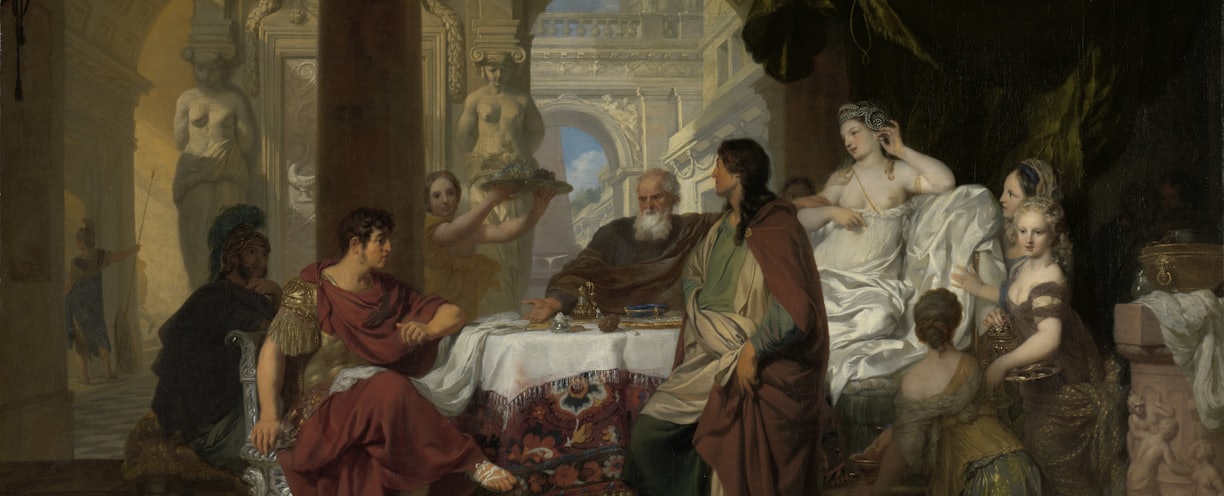Hypatia - the world’s leading female mathematician and astronomer
Were there any African women who contributed to modern-day mathematics and science? Though written records don’t account for many, there is one whose works and time can be compounded from available records to show her contribution to modern-day civilization. Hypatia (born c. 350–370; died 415 AD) was a Neoplatonist philosopher, astronomer, and mathematician, who lived in Alexandria, Egypt, then part of the Eastern Roman Empire. She was a prominent thinker in Alexandria where she taught philosophy and astronomy. She is the first female mathematician whose life is reasonably well recorded.


Were there any African women who contributed to modern-day mathematics and science? Though written records don’t account for many, there is one whose works and time can be compounded from available records to show her contribution to modern-day civilization.
Hypatia (born c. 350–370; died 415 AD) was a Neoplatonist philosopher, astronomer, and mathematician, who lived in Alexandria, Egypt, then part of the Eastern Roman Empire. She was a prominent thinker in Alexandria where she taught philosophy and astronomy. She is the first female mathematician whose life is reasonably well recorded.
Hypatia was the daughter of Theon of Alexandria, himself a mathematician and astronomer and the last attested member of the Alexandrian Museum. Hypatia continued his program, which was essentially a determined effort to preserve the Greek mathematical and astronomical heritage in extremely difficult times. She is credited with commentaries on Apollonius of Perga’s Conics (geometry) and Diophantus of Alexandria’s Arithmetic (number theory), as well as an astronomical table (possibly a revised version of Book III of her father’s commentary on the Almagest). These works, the only ones she is listed as having written, have been lost, although there have been attempts to reconstruct aspects of them. In producing her commentaries on Apollonius and Diophantus, she was pushing the program initiated by her father into more recent and more difficult areas.
She was, in her time, the world’s leading mathematician and astronomer, the only woman for whom such a claim can be made. She was also a popular teacher and lecturer on philosophical topics of a less-specialist nature, attracting many loyal students and large audiences. Her philosophy was Neoplatonist and was thus seen as “pagan” at a time of bitter religious conflict between Christians (both orthodox and “heretical”), Jews, and pagans. Her Neoplatonism was concerned with the approach to the One, an underlying reality partially accessible via the human power of abstraction from the Platonic forms, themselves abstractions from the world of everyday reality. Her philosophy also led her to embrace a life of dedicated virginity
Towards the end of her life, Hypatia advised Orestes, the Roman prefect of Alexandria, who was in the midst of a political feud with Cyril, the bishop of Alexandria. Rumors spread accusing her of preventing Orestes from reconciling with Cyril and, in March 415 AD, she was murdered by a mob of Christians led by a lector named Peter.
Hypatia's murder shocked the empire and transformed her into a "martyr for philosophy". During the Middle Ages, Hypatia was co-opted as a symbol of Christian virtue and scholars believe she was part of the basis for the legend of Saint Catherine of Alexandria. During the Age of Enlightenment, she became a symbol of opposition to Catholicism. In the nineteenth century, European literature, especially Charles Kingsley's 1853 novel Hypatia, romanticized her as "the last of the Hellenes". In the twentieth century, Hypatia became seen as an icon for women's rights and a precursor to the feminist movement.
